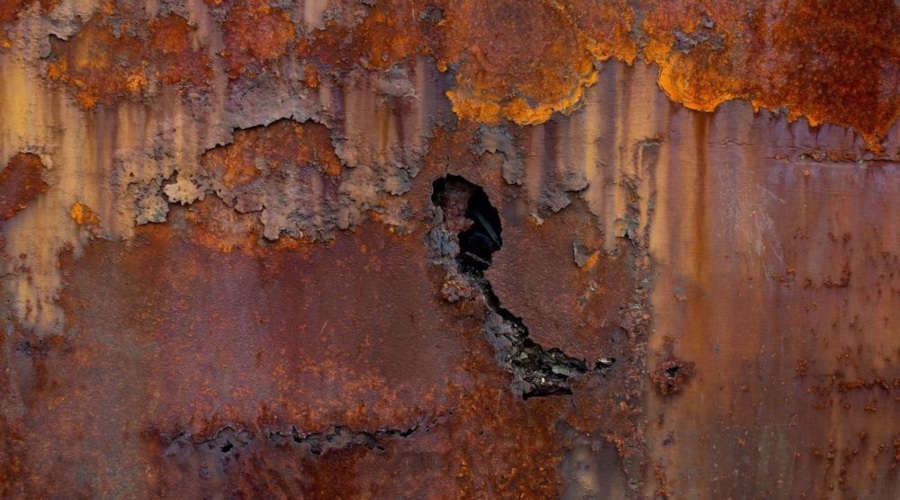
Within the newest examine revealed within the journal nanomaterials, nanopowders of Fe2O3 and Fe2O3/zeolite are manufactured for the primary time by chemical precipitation using rusted iron waste and pure zeolite heulandite.
Corrosion-induced iron rust is a significant supply of threat, contamination, and industrial monetary crises.
Significance of Hydrogen Power
Hydrogen is a vital type of energy for a number of causes, essentially the most important of which is its abundance. Hydrogen will be produced on-site the place it’s required, or it may be synthesized and supplied remotely.
To provide hydrogen fuel, hydrocarbons, petroleum, biodiesel, carbon, or water can all be utilized. Ranges of air pollution, technical challenges, and power necessities differ relying on the sources used. It’s a non-toxic compound that’s hardly ever used as a gas supply. Which means it’s environmentally pleasant and doesn’t hurt public well being.
Introduction to Fe2O3
Numerous semiconducting metals and compounds have been employed to reinforce photoelectrochemical (PEC) efficiency. Due to its robust absorption, excellent chemical sturdiness, excessive effectivity, and large availability, Fe2O3 is utilized as a photocatalyst for the PEC. Moreover, it’s a non-toxic and environmentally pleasant chemical, all of that are important for cost-effective large-scale photo voltaic power conversion.
Limitations of Fe2O3
Though Fe2O3 has many benefits for its use within the photoelectrical trade, it additionally has many disadvantages that limit its implementation in useful photocatalytic functions. Examples embrace decrease absorption extents of holes, insufficient permeability, quick electron-hole rearrangement, insufficient adsorbent property, and problem in restoration.
A number of investigations immobilized the Fe2O3 nanoparticles on numerous helps equivalent to activated carbon, clay, and zeolite to avoid these drawbacks. Zeolite is among the most researched substances amongst these.
Benefits of Zeolite
Other than its semiconducting properties, zeolite has grabbed the curiosity of teachers as a result of its robust adsorption functionality in opposition to natural pollution.
Zeolite has glorious electrostatic interplay traits, making it very best for the adsorption/degradation of pure pigments. It additionally options a lot of distinct areas, variable hydrophobicity/hydrophilicity, and photocatalytic sturdiness. Moreover, zeolite is cheap, plentiful, and non-toxic.
Zeolite is a monocrystal mineral comprised of tetrahedral Si and Al atoms. It has a variety of makes use of, together with concrete, ceramics, semiconductors, and wastewater division for hydrogen evolution. Lately, zeolite has been employed as a substrate for semiconducting PEC enzymes to extend the speed of hydrogen era.
When iron comes into contact with moisture within the air, it corrodes. Thousands and thousands of tons of rusty particles are produced as a result of corrosion of iron buildings.
Because of this, given the widespread utilization of iron wires over the world, recycling/reusing rusty particles is predicted to considerably scale back waste ranges. This examine aimed to substitute iron precursors with rust wastes as a supply of iron for the chemical precipitation manufacturing of Fe2O3 and Fe2O3/zeolite nanopowder.

Schematic of the synthesis steps of Fe2O3/zeolite. © Shaban, M., Sabt, M. B., Ahmed, A. M. & Mohamed, F., (2021).
Analysis Findings
XRD was used to find out the crystallinity and section of Fe2O3, zeolite, and Fe2O3/zeolite nanocomposite. The robust and intense peaks steered that the hematite nanoparticles produced with bulk Fe-based rust had been of nice purity and crystallinity. These XRD outcomes had been akin to beforehand generated iron oxide in a wide range of works using artificial precursors.

(A) XRD patterns of zeolite, Fe2O3, and Fe2O3/zeolite nanocomposite; and (B) XRD (104) and (110) peaks of Fe2O3 (I), Fe2O3 (II), and Fe2O3 (III). © Shaban, M., Sabt, M. B., Ahmed, A. M. & Mohamed, F., (2021).
The first core traits of Fe2O3 and Fe2O3/zeolite XRD patterns had been remarkably comparable, demonstrating that the addition of zeolite didn’t have an effect on the structural properties of the Fe2O3 photosensitizer. Nonetheless, coupling Fe2O3 with zeolite elevated the FWHM and resulted in a minor shift within the aircraft location of the Fe2O3 towards increased angles following coupling.
The catalytic effectivity of a photocatalyst is widely known to be considerably linked to its floor form. SEM photos of pure zeolite revealed micro/nano-stones in numerous non-uniform dimensions and shapes.

SEM micrographs and the corresponding particle measurement distribution for (A) pure zeolite, (B) Fe2O3, and (C) Fe2O3/zeolite. The inset of (B) reveals the pore diameter distribution. © Shaban, M., Sabt, M. B., Ahmed, A. M. & Mohamed, F., (2021).
PEC exercise is predicted to learn from the interplay of Fe2O3 nanoparticles and their deposition over the zeolite. Moreover, lowering the dimensions of the particles to the nanoscale and rising the pores may present a big efficient floor space of the Fe2O3 nanocatalyst. This could present a excessive stage of absorption of incident mild.
The sturdiness of the Fe2O3/zeolite photocatalytic exercise for H2 manufacturing is investigated in 0.9 M KOH for an prolonged interval beneath white mild and a provide voltage of +1 V. Inside the first 16 seconds, the J-value plummeted considerably. There’s a modest lower in J-value for length > 16 s earlier than reaching a steady worth of round 4.63 mA/g for 60 s. This demonstrated very excessive stability and a prolonged photochemical life expectancy, validating their prolonged H2 manufacturing lifetime.
In abstract, a really profitable recycling methodology for rusted iron wastes, in addition to a modular course of for the synthesis of Fe2O3 and Fe2O3/zeolite nanocomposite, have been disclosed. Researchers demonstrated decrease dimensions, opening the door to potential future makes use of.
Image description 1: Research: Recycling Rusty Iron with Pure Zeolite Heulandite to Create a Distinctive Nanocatalyst for Inexperienced Hydrogen Manufacturing. Picture Credit score: Quisquilia/Shutterstock.com
Reference
Shaban, M., Sabt, M. B., Ahmed, A. M. & Mohamed, F., (2021). Recycling Rusty Iron with Pure Zeolite Heulandite to Create a Distinctive Nanocatalyst for Inexperienced Hydrogen Manufacturing. Nanomaterials, 11(12). 3445. Out there at: https://www.mdpi.com/2079-4991/11/12/3445#
Read the most up to date Fuel Cell and Hydrogen Industry news at FuelCellsWorks




